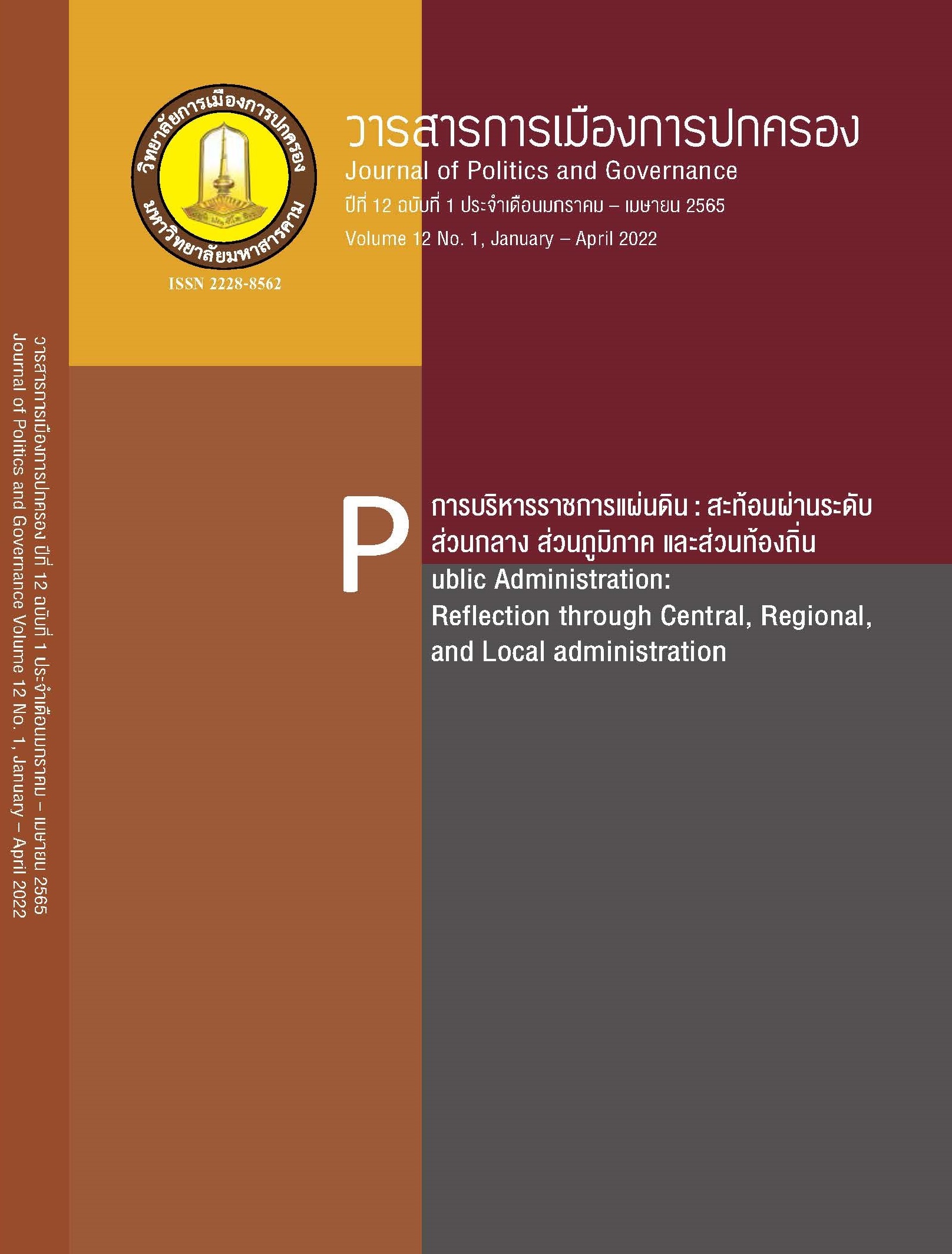Mill’s Harm Principle as the Preventive Approach Against Tyranny of the Majority in Liberal Democracy
Main Article Content
Abstract
This paper aims to provide an understanding in John Stuart Mill’s the principle of harm to others, as the preventive approach against tyranny of the majority in liberal democracy. That is, this research aims political philosophy method conducted through a textual analysis, the result shows that, Mill fears the tyranny of the majority and regards it as one of the evils in liberal democracy. So Mill argued, human beings are self-directing, and the greatest happiness of the greatest number would come from individuals having freedom. So individual adults should be free to do whatever they wish up to the point where they harm to others, That is, the only justification for interference with individual freedom to live their life as they choose is to prevent harm to others, This is Mill’s harm principle, and was the preventive approach against tyranny of the majority in liberal democracy. Mill’s most important work in this regard is his tract On Liberty, published in 1859 and Considerations on Representative Government, published in 1861.
Article Details
References
พิศาล มุกดารัศมี. (2560). ทรราช: ในฐานะศาสตร์และระบอบการปกครอง. วารสารรัฐศาสตร์ มหาวิทยาลัยสุโขทัยธรรมาธิราช, 1(2), กรกฎาคม-ธันวาคม 2560.
ศักดิ์สิทธิ์ ฆารเลิศ. (2561). พลเมืองเสรีประชาธิปไตย. กรุงเทพฯ: โรงพิมพ์มหาวิทยาลัยธรรมศาสตร์.
______. (2562). ความสัมพันธ์ระหว่างหลักแห่งอรรถประโยชน์ของจอห์น สจ๊วต มิลล์ กับประชาธิปไตย. รายงานการประชุม การประชุมวิชาการระดับชาติ ด้านการบริหารกิจการสาธารณะยุคดิจิทัล ครั้งที่ 5 การบริหารกิจการสาธารณะยุคดิจิทัล: กฎ หมาย ความเป็นธรรม และการกลับคืนสู่ประชาธิปไตย. ขอนแก่น: วิทยาลัยการปกครองท้องถิ่น มหาวิทยาลัยขอนแก่น.
_____. (2562). แนวคิดเรื่องทรราชของเสียงข้างมากในทัศนะของจอห์น สจ๊วต มิลล์. รายงานการประชุม การประชุมวิชาการบัณฑิตศึกษาระดับชาติ ครั้งที่ 15. เชียงใหม่: สมาคมรัฐศาสตร์แห่งมหาวิทยาลัยเกษตรศาสตร์.
ศักดิ์สิทธิ์ ฆารเลิศ. (2563). ชีวิต การศึกษา และผลงานของจอห์น สจ๊วต มิลล์. วารสารสังคมศาสตร์ คณะนิติรัฐศาสตร์ มหาวิทยาลัยราชภัฏร้อยเอ็ด, 4(1), มกราคม – มิถุนายน 2563.
สมบัติ จันทรวงศ์. (2527). ตัวบท (The text) กับการเรียนการสอนวิชาปรัชญาการเมือง. กรุงเทพฯ: ศูนย์วิจัยคณะรัฐศาสตร์ มหาวิทยาลัยธรรมศาสตร์.
Bartels, P. S., & Hamot, G. E. (2016). Majority Tyranny. In S. Schechter, T. S. Vontz, T. A. Birkland, M. A. Graber, & J. J. Patrick (Eds.), American Governance, 3 (pp.235-237). Farmington Hills, MI: Macmillan Reference USA.
Beetham, David and Boyle, Kevin. (2009). Introducing democracy: 80 questions and answers. Paris: UNESCO Publishing.
Benn, S. I. (2006). Democracy. In D. M. Borchert (Ed.), Encyclopedia of Philosophy, 2(2), 699-703. Detroit, MI: Macmillan Reference USA.
Bobbio, Norberto. (2005). Liberalism and democracy. Martin Ryle. & Kate Soper. London; New York: Verso.
Breiner, P. (2006). Democracy. In C. N. Tate (Ed.), Governments of the World: A Global Guide to Citizens' Rights and Responsibilities, 1 (pp.301-307). Detroit, MI: Macmillan Reference USA.
Carnagie, J. L. (2016). Classical Greek Civilization: 800–323 BCE: Politics, Law, and the Military. UXL World Eras, 3 (pp.27-57). Farmington Hills, MI: UXL.
Fontana, B. (2005). Democracy. In M. C. Horowitz (Ed.), New Dictionary of the History of Ideas, 2 (pp.551-556). Detroit, MI: Charles Scribner's Sons.
Gadamer, Hans-Georg. (1988). Truth and Method. In Joel. Weinsheimer and Donald G. Marshall (Eds.), New York: Continuum.
_____. (1976). Philosophical Hermeneutics. In David E. Linge (Ed.), Berkeley: University of California Press.
Moulton, C. (1998). Democracy Greek. Ancient Greece and Rome: An Encyclopedia for Students, 2, 2-3. New York, NY: Charles Scribner's Sons.
_____. (1998). Tyrants, Greek. In C. Moulton (Ed.). Ancient Greece and Rome: An Encyclopedia for Students, 4 (pp.111-112). New York, NY: Charles Scribner's Sons.
Mill, John Stuart. (1991). On Liberty (1859). In john gray (Ed.), On Liberty and Other Essays (pp.1-128). Oxford New York: Oxford University Press.
Mill, John Stuart. (1991). Considerations on Representative Government (1861). In john gray (Ed.), On Liberty and Other Essays (pp. 203-467). Oxford New York: Oxford University Press.
Plamenatz, John. (1963). Introduction. In Man and society Volume one: a critical examination of some important social and political theories from Machiavelli to Marx (pp. ix-xxii). London: Longman.
Salmon, J. H. M. (2004). Tyranny, Theory of. In J. Dewald (Ed.), Europe, 1450 to 1789: Encyclopedia of the Early Modern World, 6 (pp. 84-87). New York, NY: Charles Scribner's Sons.
Schall, J. V. (2003). Tyranny. New Catholic Encyclopedia, 2(14), 257. Detroit, MI: Gale.
Selesky, H. E. (2006). Taxation without Representation is Tyranny. In H. E. Selesky (Ed.), Encyclopedia of the American Revolution: Library of Military History, 2 (p. 1143). Detroit, MI: Charles Scribner's Sons.
W. A. Darity, Jr. (2008). Tyranny of the Majority. International Encyclopedia of the Social Sciences, 2(8), 478-479. Detroit, MI: Macmillan Reference USA.
Watson, B. C. S. (2006). Liberal Democracy. In C. N. Tate (Ed.), Governments of the World: A Global Guide to Citizens' Rights and Responsibilities, 3, (pp. 84-90). Detroit, MI: Macmillan Reference USA.


